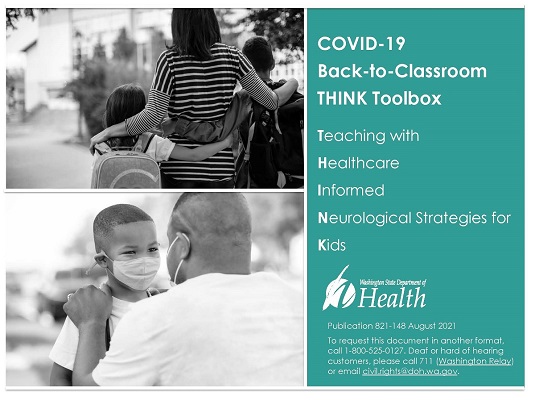The new Washington State Department of Health “Back-to-the-Classroom THINK Toolbox,” aimed at K-12 teachers and parents as the new school year is about to begin amid the COVID-19 pandemic, represents a year-and-a-half’s work by Seattle U’s Kira Mauseth, PhD, and several students.
 In the introduction to THINK, which stands for Teaching with Healthcare Informed Neurological Strategies for Kids, the creators write:
In the introduction to THINK, which stands for Teaching with Healthcare Informed Neurological Strategies for Kids, the creators write:
“Teachers, school staff, parents, caregivers and students may experience emotional responses as they return to in-person school during the COVID-19 pandemic. This toolbox provides behavioral health tips and resources for navigating some of those responses.”
The toolbox includes general information about common emotional responses of children, teens and adults during disasters and how these may present in the classroom and other areas of school life.
Two of Mauseth’s colleagues on the Behavioral Health Strike Team, Tona McGuire, PhD, and Wren Hudgins PhD, also worked on the Toolbox.
“It was quite the effort to get this out in time for the start of school and I am really proud of the content,” says Mauseth, senior instructor of psychology and co-leader of the state health department’s Behavioral Health Strike Team.
Mauseth worked with students who were interested on what she dubbed the “behavioral health research group.” Some of the students participated for practicum credit in the Psychology Department and others because they were interested and wanted to support the state’s COVID response.
The Seattle U students who worked on the project were Joanna Corpuz, ’22, Isabel Gilbertson, ’22, An Than, ’23, Sydney Lindell, ’21, Breanne Coulthard, ’21, and Kes Sorenson, ’21.
“During the school year, we would meet every other week to check in and go over projects and assignments,” says Mauseth. “Their job was to research topics associated with behavioral health in the pandemic including mask wearing, risk-assessment and vaccine hesitancy among many others. They also scoured the professional and peer-reviewed literature to summarize what the research shows us that we can then use in our official Department of Health reports and guidance documents.”
Mauseth says the students’ work was impactful.
“Joanna and Isabel distinguished themselves with the leadership they have shown in this work even over their summer break while we were editing THINK and other documents,” says Mauseth. “The effort and quality work of all the students is to be commended. They have provided an invaluable service to the Department of Health in this pandemic.”
